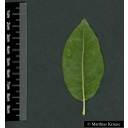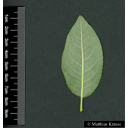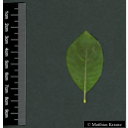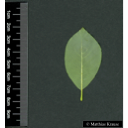Useful information about the taxon (species, subspecies, variety...)
Salix caprea L. 1753
Salicaceae
(APG IV)goat willow, pussy willow
Taxon concept: The Plant List (2014), version 1.1
Distribution: Europe, Turkey, Caucasus, North Iran, Turkmenistan, Kyrgyzstan, Kazakhstan, Russia: West Siberia, East Siberia, Amur, Sachalin, Kamchatka Peninsula; China, Korea, Japan; introduced and naturalised within North America
Salix caprea L. - Accepted: Salix caprea L. bei Zander 2008; Familie: Salicaceae (Zander 2008)Salix caprea L. - Accepted: Salix caprea L. bei The Plant List (2010); Familie: Salicaceae (APG III)Salix caprea L. - Accepted: Salix caprea L. bei Schmeil-Fitschen 2019; Familie: Salicaceae (APG IV)Salix caprea L. - Accepted: Salix caprea L. bei BfN Checklist Flora DE; Familie: Salicaceae (APG IV)Salix caprea L. - Accepted: Salix caprea L. bei World Flora Online - APG IV (Angiosperms); Familie: Salicaceae (World Flora Online - APG IV (Angiosperms))
- Flowers
- dioecious; male and female flowers in furry catkins
- Flower ecology
- insect-pollinated (entomophilous) (honey bees, butterflies)
- Life form
- woody, tree
- Foliage persistence
- deciduous
- Fruits
- capsule fruit
- Fruit ecology
- wind-dispersed (anemochorous)
- Soil conditions
- on mesic to moist, nutrient-rich, neutral to moderately acid, disturbed (stony, sandy, or pure) loam soils
- Light conditions
- full sun plant
- Light conditions symbols
- ○
- Succession type
- fast growing and light demanding pioneer species of forests
- Natural occurrence (habitat)
- pollarded and detrital woodlands, forests edges, gravel pits, quarries, disturbed areas
- Comment to ecology
- important nectar and pollen source for insects and birds at the beginning of the year, early beekeeping
- Vegetation typ and synecology (plant community)
- boreal forests and temperate, mesophytic broad-leaved and mixed forests; commonly occurring with Betula pendula, characteristic species of the Epilobio-Salicetum capreae (community Sambuco-Salicion capreae)
- Constraints according soil conditions
- not salt tolerant
- Usage
- foliage was used for livestock fodder; wood is suitable for tanning; tough and flexible bark is used as a leather substitute; stems are used in basket making; different parts of the tree are medically used: as an anodyne and febrifuge (due to salicin and salicyl acid, respectively), externally in the treatment of headaches and ophthalmia, and as aphrodisiac, cordial and stimulant
Bundesamt für Naturschutz (BfN) (1999-2001 and ongoing): Floraweb - Daten und Informationen zu Wildpflanzen und zur Vegetation Deutschlands. www.floraweb.de.; Haider, M. et al. (2005): Wildbienenkataster. See: https://www.wildbienen-kataster.de; Kew Gardens and Collaborators (2017): Plants of the World Online. see: plantsoftheworldonline.org.; Ministerium für Ernährung, Landwirtschaft, Umwelt und Forsten, Baden-Württemberg (Hrsg.) (1985): Pflanzenkatalog zur Verbesserung der Bienenweide und des Artenreichtums (Kurztitel: Bienenweidekatalog); Oberdorfer, E. (2001): Pflanzensoziologische Exkursionsflora. Für Deutschland und angrenzende Gebiete. Eugen Ulmer Verlag, Stuttgart, 8., stark überarb. u. erg. Aufl, 1056 S. 978-3-8001-3131-0.; Pritsch, Günter et al. (1985): Bienenweide.. Neumann-Neudamm, Melsungen; Pritsch, Günter et al. (2007): 200 Trachtpflanzen erkennen und bewerten.. Kosmos, Stuttgart; Schick, B. & Spürgin, A. (1997): Die Bienenweide. Eugen Ulmer Verlag, Stuttgart, Auflage: 4., völlig neubearb. u. erw. A., 216 S. 978-3800174188.; The International Plant Names Index (2009). Published on the Internet http://www.ipni.org; Courtesy to IPNI, 2009. Exported from IPNI at date: 2009-09-22 20:17:51; Werle, Susanne et al. (2015): ITS2 DNA metabarcoding of wild bee pollen loads, collected in 2020 and 2021 across all three exploratories. See: https://www.bexis.uni-jena.de/ddm/data/Showdata/31545?version=6; Westrich, P. et al. (2018): Die Wildbienen Deutschlands.. Ulmer Verlag ISBN 978-8186-0123-2.;
Diese Webseite verwendet Google Maps, um Karten und Standorte von Pflanzen in den Hohenheimer Gärten anzuzeigen. Dadurch werden unter Umständen Daten an Google weitergeleitet, was mit einer Verarbeitung Ihrer personenbezogenen Daten verbunden sein kann. Die Datenschutzerklärung von Google finden Sie hier: Datenschutzerklärung von Google
| Sex | Standort | Accession number | Planting year | Donation | IPEN | Lat. | Long. |
|---|---|---|---|---|---|---|---|
| Baumschule Hohenheim | BS-5468 | XX-0-HOH-BS-5468 | 0 | 0 | |||
| Parzelle X | LG-X-316-25469 | 2022 | XX-0-HOH-LG-X-316-25469 | 48,705055 | 9,213868 |




